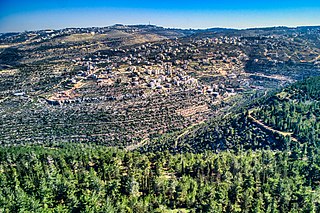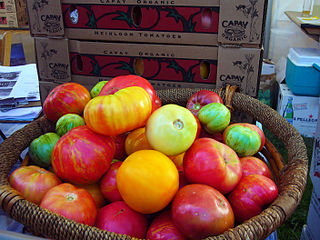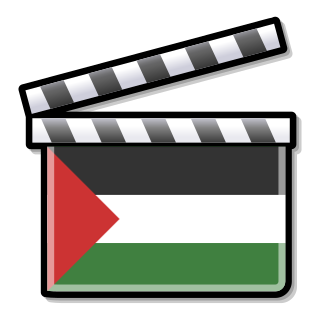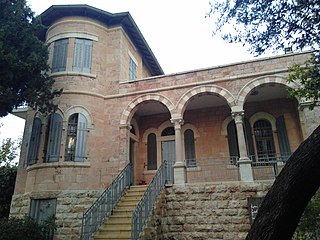Related Research Articles

Palestine, officially the State of Palestine, is a country in the southern Levant region of West Asia recognized by 146 out of 193 UN member states. It encompasses the Israeli-occupied West Bank, including East Jerusalem, and the Gaza Strip, collectively known as the occupied Palestinian territories, within the broader geographic and historical Palestine region. Palestine shares most of its borders with Israel, and it borders Jordan to the east and Egypt to the southwest. It has a total land area of 6,020 square kilometres (2,320 sq mi) while its population exceeds five million people. Its proclaimed capital is Jerusalem, while Ramallah serves as its administrative center. Gaza City was its largest city prior to evacuations in 2023.

Lacoste S.A. is a French luxury sports fashion company, founded in 1933 by tennis player René Lacoste, and entrepreneur André Gillier. It sells clothing, footwear, sportswear, eyewear, leather goods, perfume, towels and watches. The company can be recognised by its green Crocodile logo. René Lacoste, the company's founder, was first given the nickname "the Crocodile" by the American press after he bet his team captain a crocodile-skin suitcase that he would win his match. He was later redubbed "the Crocodile" by French fans because of his tenacity on the tennis court. In November 2012, Lacoste was bought outright by Swiss family held group Maus Frères.

An heirloom plant, heirloom variety, heritage fruit, or heirloom vegetable is an old cultivar of a plant used for food that is grown and maintained by gardeners and farmers, particularly in isolated communities of the Western world. These were commonly grown during earlier periods in human history, but are not used in modern large-scale agriculture.

Battir is a Palestinian village in the Bethlehem Governorate of the State of Palestine, in the West Bank, 6.4 km west of Bethlehem, and southwest of Jerusalem. In 2017, the village had a population of 4,696.

An heirloom tomato is an open-pollinated, non-hybrid heirloom cultivar of tomato. They are classified as family heirlooms, commercial heirlooms, mystery heirlooms, or created heirlooms. They usually have a shorter shelf life and are less disease resistant than hybrids. They are grown for various reasons: for food, historical interest, access to wider varieties, and by people who wish to save seeds from year to year, as well as for their taste.

Leila Sansour, is a Russian-born Palestinian film director and film producer. She is the founder and chief executive officer of Open Bethlehem, a non-governmental foundation established to promote and protect the life and heritage of the city of Bethlehem. Sansour developed the Bethlehem Passport in partnership with the city council and governor of Bethlehem. Pope Benedict XVI became the first recipient of the Bethlehem passport when he accepted the citizenship of Bethlehem from Palestinian president Mahmoud Abbas in December 2005.

Cinema of Palestine refers to films made in Palestine and/or by Palestinian filmmakers. Palestinian films are not exclusively produced in Arabic and some are produced in English and French.

Palestinian cuisine consists of foods from or commonly eaten by Palestinians or in the region of Palestine, whether in Palestine, Israel, Jordan, or refugee camps in nearby countries, or by the Palestinian diaspora. The cuisine is a diffusion of the cultures of civilizations that settled in the region of Palestine, particularly during and after the Islamic era beginning with the Arab Ummayad conquest, then the eventual Persian-influenced Abbasids and ending with the strong influences of Turkish cuisine, resulting from the coming of the Ottoman Turks. It is similar to other Levantine cuisines, including Lebanese, Syrian and Jordanian.
Ahmet Öğüt is a conceptual artist living and working in Amsterdam, Netherlands and Berlin, Germany. He works with a broad range of media including video, photography, installation, drawing and printed media.

Riwaq or Centre for Architectural Conservation is a center for the preservation of architectural heritage of rural Palestine. The organization is based in Ramallah and owes its name mainly to a riwaq, which is an arcade in Islamic architecture.
Jumana Emil Abboud is a Palestinian artist living and working in Jerusalem.
Larissa Sansour is a Palestinian artist who currently resides in London, England. Her practice includes photography, film, sculpture, and installation art. Some of her works include Tank (2003), Bethlehem Bandolero (2005), Happy Days (2006), Cairo Taxilogue (2008), The Novel of Novel and Novel (2009), Falafel Road (2010), Palestinauts (2010), Nation State (2012), In the Future, They Ate From the Finest Porcelain (2016), and Archaeology in Absentia (2016).
WangShui (1986) is an American contemporary artist. They work across a range of media including film, installation, painting, and sculpture. They are based in New York City.
Maria Thereza Alves is a Brazilian-born American and German installation artist, video artist, activist, filmmaker, and writer. She lives in Berlin.
Noor Abuarafeh is a Palestinian visual artist who works primarily with video installation, performance, and text-based art. Her work explores themes of memory, imagination, and the construction and interpretation of history.

Basel AbbasandRuanne Abou-Rahme, are an artist duo. Abbas is a Cypriot of Palestinian-descent visual artist and filmmaker; and Abou-Rahme is an American of Palestinian-descent visual artist and filmmaker. They utilize images, audio, text, installations, and performance in their work.
Palestinian landscape painting refers to landscape painting made in and about the land of Palestine. Historically, Palestinian landscape art originally focused on a majority-Islamic depiction of the holy land. However, after the Nakba and subsequent displacement of Palestinians, Palestinian landscape art began to have more of a nationalist subtext to explore Palestinians’ connection to their identity and homeland.
Palestinian women artists refer to women artists who identify as Palestinian. Such artists may have lived in the historical region of Palestine, live in the current State of Palestine, are members of the Palestinian diaspora. These artists channel their experiences with racial, sexual, and cultural oppression to create works that preserve the Palestinian identity.
References
- ↑ Bauck, Whitney. "'They kept us alive for thousands of years': could saving Palestinian seeds also save the world?". the Guardian. Retrieved 2024-04-30.
- ↑ "The woman saving Palestinian heirloom seeds". www.bbc.com. Retrieved 2024-04-30.
- ↑ Higgie, Jennifer (2019-08-19). "Writer and Activist Vivien Sansour on Food, Farming, Heritage and Healing". Frieze. No. 205. ISSN 0962-0672 . Retrieved 2024-04-30.
- ↑ "Chicago Biennial: the undeniable power of architecture". www.ft.com. Retrieved 2024-04-30.
- ↑ "Biennale Arte 2019 | Closing day of the Biennale Arte 2019". La Biennale di Venezia. 2019-11-14. Retrieved 2024-04-30.
- ↑ Bierend, Doug (2024-01-08). "The Resilience of Rooted Beings". MOLD :: Designing the Future of Food. Retrieved 2024-04-30.
- ↑ "Vivien Sansour". rpl.hds.harvard.edu. Retrieved 2024-04-30.
- ↑ "Vivien Sansour". Experimental Humanities. Retrieved 2024-04-30.
- ↑ Bauck, Whitney. "'They kept us alive for thousands of years': could saving Palestinian seeds also save the world?". the Guardian. Retrieved 2024-04-30.
- ↑ Higgie, Jennifer (2019-08-19). "Writer and Activist Vivien Sansour on Food, Farming, Heritage and Healing". Frieze. No. 205. ISSN 0962-0672 . Retrieved 2024-04-30.
- ↑ "Vivien Sansour: Zaree'a". Delfina Foundation. Retrieved 2024-04-30.
- ↑ Latiff, Osman (2021), Latiff, Osman (ed.), "Landscaping 'Otherness and Challenging Frames of "Nothingness" in Contemporary Palestine'", Navigating War, Dissent and Empathy in Arab/U.S Relations: Seeing Our Others in Darkened Spaces, Cham: Springer International Publishing, pp. 25–44, doi:10.1007/978-3-030-76747-1_2, ISBN 978-3-030-76747-1 , retrieved 2024-04-30
- ↑ Murray, Hubert (June 2021). "Landscape as Resistance in the West Bank". Places Journal. Retrieved 2024-05-02.